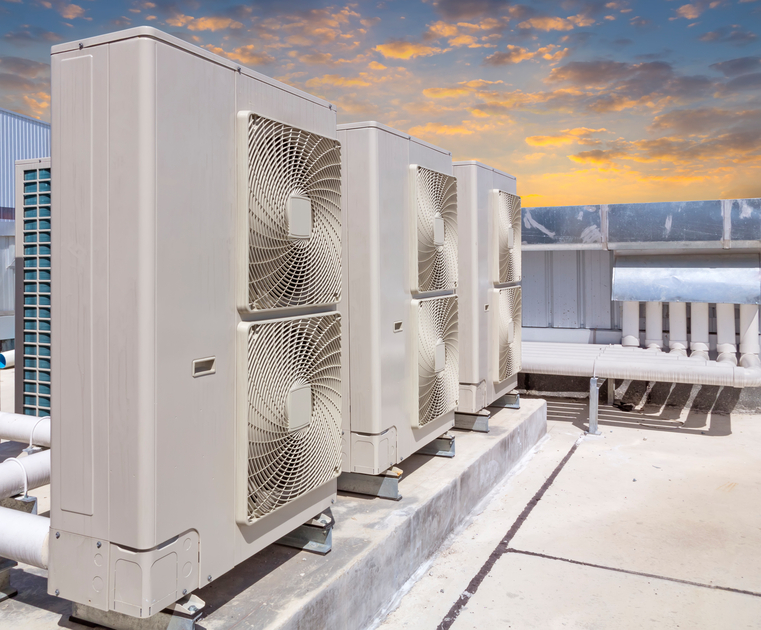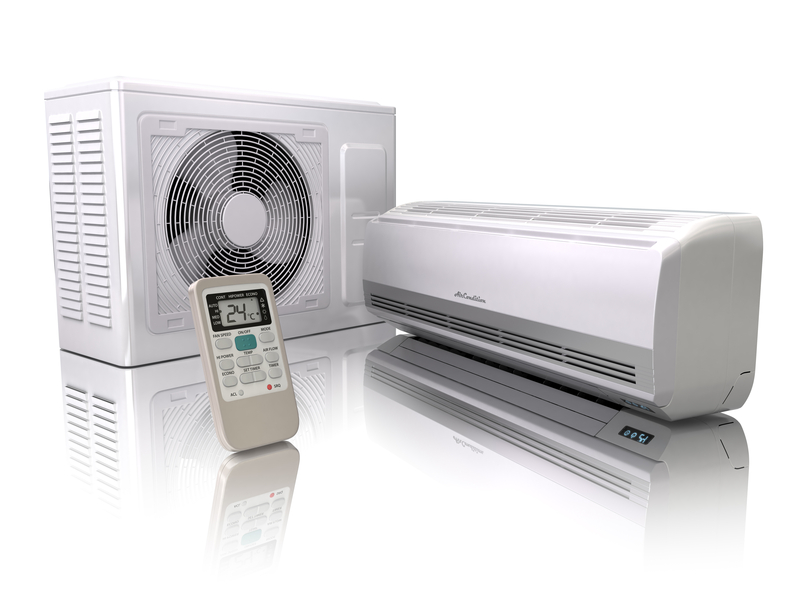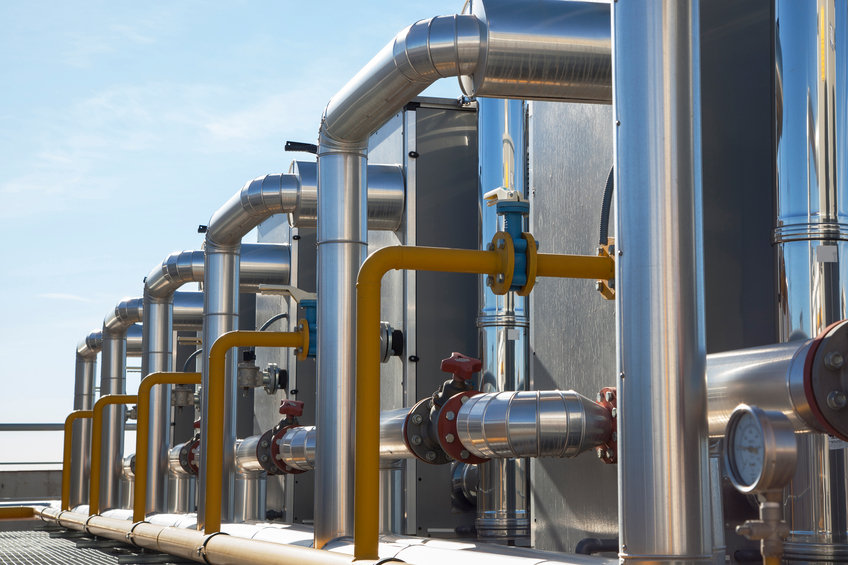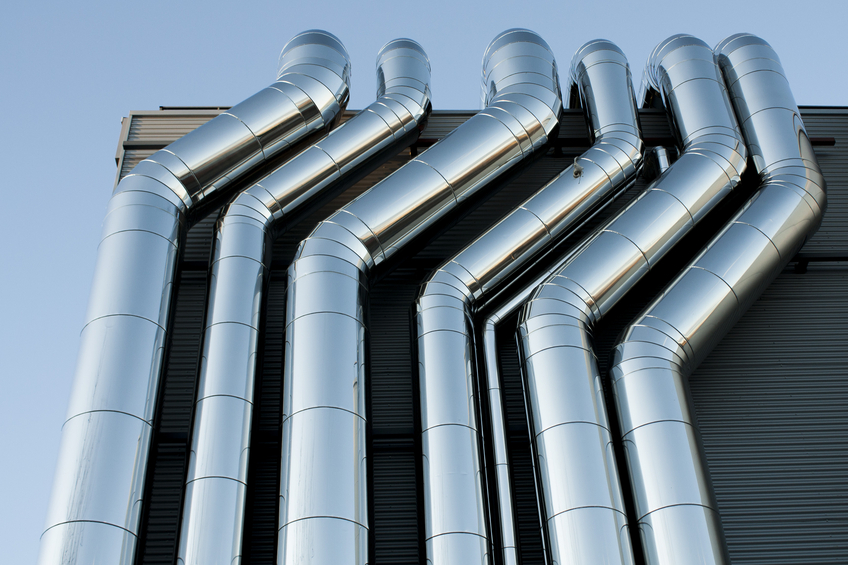Saskatchewan HVAC 30 PDH Discount Package 1
Courses in this Package
Heating and Cooling System Upgrades (M03-022)
Cooling Load Calculations and Principles (M06-004)
Air Conditioning Psychrometrics (M05-005)
HVAC Design for Oil and Gas Facilities (M04-014)
HVAC - How to Size and Design Ducts (M06-032)
HVAC Cooling Systems for Data Centers (M05-020)
General Principals of Engineering Ethics for Saskatchewan Professional Engineers (SK1-001)

This online engineering PDH course identifies the opportunities for improving the performance of the heating and cooling system based on the type of system that is in place.
Heating and cooling systems are the largest single consumers of energy in buildings. These systems condition the air within a building so that occupants are comfortable. Heating and cooling systems consist mainly of chillers, boilers, cooling towers, and pumps. There are central heating and cooling systems, and unitary systems that combine heating and cooling. Opportunities exist for improvement to both central and unitary systems.
This 3 PDH online course is applicable to engineers, contractors, designers and other technical professionals who are involved in the retrofit of existing heating and cooling systems.
This P.Eng. continuing education course is intended to provide you with the following specific knowledge and skills:
- Understanding the best opportunities available for upgrading central cooling systems including chillers, cooling towers, water side economizers and pumps
- Understanding the best opportunities available for upgrading central heating systems including boilers and furnaces
- Understanding the best opportunities available for unitary systems including packaged or rooftop units, split system packaged units, air source heat pumps and water loop heat pump systems
- Learning about new strategies aimed at saving energy such as geothermal heat pumps, district cooling and heating, radiant heating and cooling, cool storage, high temperature difference distribution, evaporative cooling, and non-electric cooling
In this professional engineering CEU course, you need to review "Heating and Cooling System Upgrades" of the Energy Star Building Manual. (Energy Star is a joint program of the U.S. Environmental Protection Agency and the U.S. Department of Energy).
Upon successful completion of the quiz, print your Certificate of Completion instantly. (Note: if you are paying by check or money order, you will be able to print it after we receive your payment.) For your convenience, we will also email it to you. Please note that you can log in to your account at any time to access and print your Certificate of Completion.

This online engineering PDH course provides a procedure for preparing a manual calculation for cooling load using CLTD/CLF method suggested by ASHRAE and includes two detailed examples. For more advanced methods such as TFM, the reader should refer to ASHRAE and other handbooks.
Heating and cooling load calculations are carried out to estimate the required capacity of heating and cooling systems, which can maintain the required conditions in the conditioned space. To estimate the required cooling or heating capacities, one has to have information regarding the design indoor and outdoor conditions, specifications of the building, specifications of the conditioned space, and any special requirements of the particular application.
Generally, heating and cooling load calculations involve a systematic and stepwise procedure, which account for all the building energy flows. In practice, a variety of methods ranging from simple rules-of-thumb to complex transfer function methods are used to arrive at the building loads.
This 6 PDH online course is applicable to mechanical engineers, design and construction personnel, technical staff and facility personnel who are interested in gaining a better understanding in cooling load calculations and principles.
This P.Eng. continuing education course is intended to provide you with the following specific knowledge and skills:
- Understand the basic terminology and definitions related to air conditioning load calculations
- Explain the differences between heating and cooling load design considerations
- Explain the difference between 1) space heat gain v/s cooling load 2) space cooling v/s cooling load and 3) external loads v/s internal loads
- Differentiate between sensible and latent loads
- List commonly used methods for estimating cooling loads
- Estimate the internal and external cooling loads using CLTD/CLF method from building specifications, design indoor and outdoor conditions, occupancy etc.
- Describe various equations and the information sources to determine conductive load through opaque building elements.
- Describe various equations and information sources to determine the solar transmission load through glazing.
- Describe various equations and information sources to determine the internal load due to people, lights and power appliances.
- Determine the supply air flow rate
- Learn by examples the detailed methodology to cooling load calculations
- Learn the functional parameters of software programs such as TRACE 700 and CHVAC
In this professional engineering CEU course, you need to review the course document titled "Cooling Load Calculations and Principles".
Upon successful completion of the quiz, print your Certificate of Completion instantly. (Note: if you are paying by check or money order, you will be able to print it after we receive your payment.) For your convenience, we will also email it to you. Please note that you can log in to your account at any time to access and print your Certificate of Completion.

This online engineering PDH course provides an overview of psychrometrics and suggests how a better understanding of psychrometrics will improve air conditioning design and selection of equipment.
Psychrometry is the study of moist air. It is significant in terms of thermal comfort and is a major consideration in design of air conditioning systems. Air conditioning engineers use the psychrometric chart to predict changes in the environment when the amount of heat and/or water in the air changes. A psychrometric chart provides a convenient way to look at the air conditioning processes and it will answer why heated air can hold more moisture, and conversely, how allowing moist air to cool will result in condensation.
This 5 PDH online course is applicable to students, mechanical and HVAC engineers, process engineers, architects, building designers, contractors, energy auditors, facility managers who are interested in gaining a better understanding of psychrometrics.
This P.Eng. continuing education course is intended to provide you with the following specific knowledge and skills:
- Understand the basic terminology and definitions related to air properties
- Read psychrometric chart
- Describe relationship of 7 air properties: DBT, WBT, RH, dew point, absolute humidity, enthalpy and specific volume
- Apply the psychrometric charts on air-conditioning applications
- Understand how the various properties of air are measured
- Understand various psychrometric processes: sensible heating and cooling, cooling and dehumidification, evaporative cooling, heating and humidification and air mixing
- Understand the air conditioning processes for 4 extreme climatic conditions viz. Miami, Phoenix, Minneapolis and Seattle
- Understand the difference between sensible heat and latent heat
- Understand the terms sensible heat factor, room sensible heat factor and grand sensible heat factor
- Understand how to calculate the required volume air flow rate
- Understand how to compute the cooling coil capacity with example
- Understand standard equations used in air conditioning
In this professional engineering CEU course, you need to review the course document titled, "Air Conditioning Psychometrics".
Upon successful completion of the quiz, print your Certificate of Completion instantly. (Note: if you are paying by check or money order, you will be able to print it after we receive your payment.) For your convenience, we will also email it to you. Please note that you can log in to your account at any time to access and print your Certificate of Completion.

This online engineering PDH course will help explain the complexities of HVAC design for offshore installations and how to go about carrying out the selection of a proper system and related equipment.
Oil & Gas (O&G) facilities are fraught with numerous challenges related to health and safety, logistics, economics, quality assurance and overall performance. HVAC design for such facilities needs special considerations not only to minimize the potential loss to capital investment but also to isolate the personnel from life-threatening environment. The main objectives of HVAC systems in O&G facilities include:
- Maintain acceptable working and living environment for personnel and non - destructive conditions for equipment.
- Prevent ingress of potentially explosive/toxic gas-air mixtures into non-hazardous areas, electrical switch rooms and equipment rooms.
- Prevent formation of any combustible mixture and maintain an atmosphere where the gas/air mixture is kept below LEL during normal operation.
- Provide dilution ventilation for all enclosed hazardous areas in order to reduce the risk from build-up of potentially explosive/toxic gases within these spaces.
- Prevent smoke spreading and keep enclosed escape ways free of smoke in case of fire.
This 4 PDH online course is applicable to mechanical and HVAC engineers, process engineers, architects, building designers, contractors, energy auditors, facility managers who are involved in the design and installation of HVAC for oil and gas facilities.
This P.Eng. continuing education course is intended to provide you with the following specific knowledge and skills:
- Be aware of the critical design issues related to oil & gas facilities
- Understand how an offshore installation different from an onshore installation
- Understand the concept of area classification for hazardous locations
- Understand the importance of pressure differential between hazardous and non-hazardous areas.
- Understand the critical system parameters that must be controlled and monitored
- Understand the importance of dilution ventilation to mitigate the impacts of accidental releases of flammable and toxic gases
- Understand the concepts of air cleaning and filtration requirements
- Understand the requirements of blast proof intake and exhaust valves in line with structural requirements
- Understand the specifications of HVAC equipment and machinery suitable for saline corrosive atmosphere
- Understand the importance of commissioning and documentation
In this professional engineering CEU course, you need to review the course document titled "HVAC Design for Oil and Gas Facilities".
Upon successful completion of the quiz, print your Certificate of Completion instantly. (Note: if you are paying by check or money order, you will be able to print it after we receive your payment.) For your convenience, we will also email it to you. Please note that you can log in to your account at any time to access and print your Certificate of Completion.

This online engineering PDH course reviews the above criteria in detail and provides guidance on the planning, layout and sizing of supply and return air ducts.
In air conditioning systems the duct is considered a static component of the installation through which air flows within the building, connecting all parts of the system. Ducts can be best described as arteries of the central air-conditioning system. These play an important role in keeping the whole HVAC system fit and achieving comfortable conditions throughout its life span.
Defects in a duct system can waste hundreds of dollars a year by forcing the HVAC system to run longer than necessary. Ductwork problems also make certain rooms too hot or too cold at different times of the year, while introducing dirt and bad odors into the forced-air system.
The objective of good duct design is to:
-
Optimize duct size (manufacturing costs);
-
Minimize duct system friction losses (operational cost);
-
Reduce duct system acoustics (environmental costs); and
-
Minimize air balance procedures (commissioning costs).
This 6 PDH online course is intended for mechanical and HVAC engineers, architects, building designers, contractors, energy auditors, facility managers, property and estate managers, O&M personnel, and other professionals interested in gaining a better understanding of sizing and designing duct systems.
This P.Eng. continuing education course is intended to provide you with the following specific knowledge and skills:
-
Learning about the velocity and pressure classifications of ductwork
-
Applying various materials and shapes that provide the most cost effective alternative
-
Learning about the various supply air duct configurations
-
Learning about the various duct sizing methods, including the velocity method, equal friction method and static regain method
-
Understanding the interaction between fan and duct systems
-
Learning about duct construction and reinforcement
-
Familiarizing with sound engineering practices for duct layout and routing
-
Learning about ductwork testing and estimating system performance
-
Learning about the various duct cleaning methods
-
Knowing the typical performance characteristics of a duct system
-
Understanding the importance of system balancing and optimization
In this professional engineering CEU course you will need to review the course document titled "HVAC - How to Size and Design Ducts".
Upon successful completion of the quiz, print your Certificate of Completion instantly. (Note: if you are paying by check or money order, you will be able to print it after we receive your payment.) For your convenience, we will also email it to you. Please note that you can log in to your account at any time to access and print your Certificate of Completion.

This online engineering PDH course presents a detailed discussion on the key concepts and practices relating to data cooling technology as well as air flow practices that improve conditions for IT equipment and reduce overall HVAC energy consumption.
The basic physics of a data center is that electricity is converted to heat. Equipment in the data center expends power, generating heat, requiring air conditioning and ventilation equipment to keep them cool and running well. If the temperature rises too high, equipment will begin to malfunction or become damaged; as the internal components begin to swell and pull away from each other (or simply burn-up). The cooling system is also required to adjust the humidity of the air and to remove particles. Depending upon the climate at a data center's location, moisture may need to be added or removed. Similarly, the types and amount of particles to be removed from the air are determined by the location and external events.
Data center cooling is a highly specialized area that uses precision cooling equipment that differs from the conventional comfort equipment. The combination of heat and the high sensitivity of electronic components in data center environments demands maximum availability and performance of the cooling equipment. Precision cooling systems have been designed specifically for this purpose.
This 5 PDH online course is applicable to mechanical engineers, electrical engineers, HVAC consultants and engineers, architects, O & M professionals, facility managers, estimators and general audience seeking to gain a better understanding of HVAC cooling systems for data centers. No specific prerequisite training or experience is required.
This P.Eng. continuing education course is intended to provide you with the following specific knowledge and skills:
-
Understanding the data center space planning and utilities requirements based on current and future needs
-
Describing the various cooling options and how to apply them effectively
-
Understanding the fundamentals of heat gain, temperature and humidity requirements, pressurization and filtration, as applicable, to data centers
-
Understanding the difference between comfort versus precision cooling
-
Learning about the raised floor and overhead air distribution schemes for data center cooling
-
Understanding how airflow is managed in the data center to prevent hot air/cool air mixing and the ways to improve this with containment
-
Understanding the environmental implications, design and system pitfalls as well as energy efficiency optimization
-
Identifying the key elements of data center cooling systems including CRAC, DX system, chilled water systems, evaporative condensers, etc.
-
Explaining the implications of equipment placement, installation and decommissioning on cooling and energy efficiency
-
Determining how cooling may be applied in various data center scenarios
-
Learning about HVAC best practices and how they apply to a specific site and how they improve energy efficiency
-
Learning about the benchmark energy efficiency figures for ideal data centers
In this professional engineering CEU course, you need to review the course document titled, "HVAC Cooling Systems for Data Centers".
Upon successful completion of the quiz, print your Certificate of Completion instantly. (Note: if you are paying by check or money order, you will be able to print it after we receive your payment.) For your convenience, we will also email it to you. Please note that you can log in to your account at any time to access and print your Certificate of Completion.

This online engineering PDH ethics course is (1) the study of moral issues and decisions confronting individuals and organizations involved in engineering and (2) the study of related questions about moral conduct, character, ideals and relationships of peoples and organizations involved in technological development (Martin and Schinzinger, Ethics in Engineering).
This course will address the principles of engineering ethics that every engineer is expected to live by when practicing their profession. It will also present unique ethical case studies randomly selected to demonstrate ethical challenges for professional engineers and alternatives to address these challenges.
This 1 PDH online course is applicable to Professional Engineers licensed in the Province of Saskatchewan and who are required to demonstrate continuing professional competency in engineering ethics as a condition of their license renewal. For each renewal period, every licensee must complete at least one (1) professional development hour relative to the principals of professional responsibility, conduct and ethics.
This P.Eng. continuing education course is intended to provide you with the following specific knowledge and skills:
- Understanding the definition of engineering ethics
- Learning how to hold the utmost safety, health, and welfare of the public when practicing your profession
- Familiarizing with the conditions to issue public statements
- Gaining a general overview on how to represent each employer or client as a faithful trustee
- Learning how to build your professional reputation on the merit of your services
- Understanding professional ethical practices through presenting realistic case studies
- Learning how to handle proprietary information and intellectual property rights
Upon successful completion of the quiz, print your Certificate of Completion instantly. (Note: if you are paying by check or money order, you will be able to print it after we receive your payment.) For your convenience, we will also email it to you. Please note that you can log in to your account at any time to access and print your Certificate of Completion.